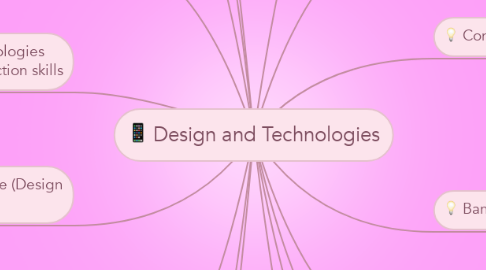Design and Technologies
by Annabel Lindsay-Smith

1. Aims
1.1. are creative, innovative and enterprising when using traditional, contemporary
1.2. effectively and responsibly select and manipulate appropriate technologies, resources, materials, data, systems, tools and equipment when designing and creating products, services, environments and digital solutions
1.3. critique and evaluate technologies processes to identify and create solutions to a range of problems or opportunities
1.4. investigate, design, plan, manage, create, produce and evaluate technologies solutions
1.5. engage confidently with technologies and make informed, ethical and sustainable decisions about technologies for preferred futures including personal health and wellbeing, recreation, everyday life, the world of work and enterprise, and the environment.
2. Student Diversity
2.1. Students with disability
2.2. English as an additional language or dialect
2.3. Gifted and Talented Students
3. Content Structure
3.1. Image of the content structure for Digital Technologies & Design and Technologies.
4. Key idea of the Technologies Learning Area
4.1. Systems thinking and the overarching idea: Creating preferred futures
4.2. Project management
5. Band Level Descriptions
5.1. Foundation to Year 2
5.2. Years 3 and 4
5.3. Years 5 and 6
5.4. Years 7 and 8
5.5. Years 9 and 10
6. Content Descriptions
6.1. The content descriptions are different to each band level the students are in.
7. Content Elaborations
7.1. Provide extra examples for the teacher to utilise and give extra description
8. Achievement Standards
8.1. The Achievement standards show the growth, the learning and show where the student is compared to where they should be in the different areas associated with the design and technology content
9. General Capabilities
9.1. Literacy
9.2. Numeracy
9.3. Information and Communication Technology
9.4. Critical and creative thinking
9.5. Personal and social capability
9.6. Ethical Understanding
9.7. Intercultural Understanding
10. Cross-Curriculum Priorities
10.1. Aboriginal and Torres Strait Islander histories and cultures
10.2. Asia and Australia’s engagement with Asia
10.3. Sustainability
11. Links to other Learning areas
11.1. Englsih
11.2. History
11.3. Geography
11.4. Maths
11.5. The Arts
11.6. Science
11.7. Health and P.E
12. Links for Implementation
12.1. develop skills and dispositions such as curiosity, imagination, creativity and evaluation
12.2. engage all aspects of perception: sensory, emotional, cognitive, physical and spiritual
12.3. work individually and collaboratively
13. Design and Technologies processes and production skills
13.1. Critiquing, exploring and investigating
13.2. Generating, developing and evaluating ideas
13.3. Planning, producing and evaluating designed solutions.
14. Scope and Sequence (Design and Technologies)
14.1. Image of the Scope and Sequence
15. Digital Technologies Process and Production Skills
15.1. using data (Years F to 4), which develops into managing and analysing data (Years 5 to 10). This involves collecting, managing and interpreting data when creating information, and the nature and properties of data, how they are collected and interpreted
15.2. using digital systems (Years F to 4 only), which involves using a range of digital systems and their components and peripherals
15.3. defining and solving problems (Years F to 2), which develops into defining problems and implementing solutions (Years 3 to 6) and then specification, algorithms and implementation (Years 7 to 10). These involve the precise definition of problems and specification and implementation of their solutions
15.4. creating and communicating (Years F to 2), which develops into creating and communicating online (Years 3 to 4) and creating and interacting online (Years 5 to 10). This involves creating and communicating information, especially online by creating websites, and interacting safely using appropriate technical and social protocols.
16. Digital Technologies Key Concepts
16.1. Abstraction
16.2. Data Collection
16.3. Specification
16.4. Digital Systems
16.5. Interactions
17. Scope and Sequence (Digital Technologies)
17.1. Image of the Digital Technologies Scope and Sequence


